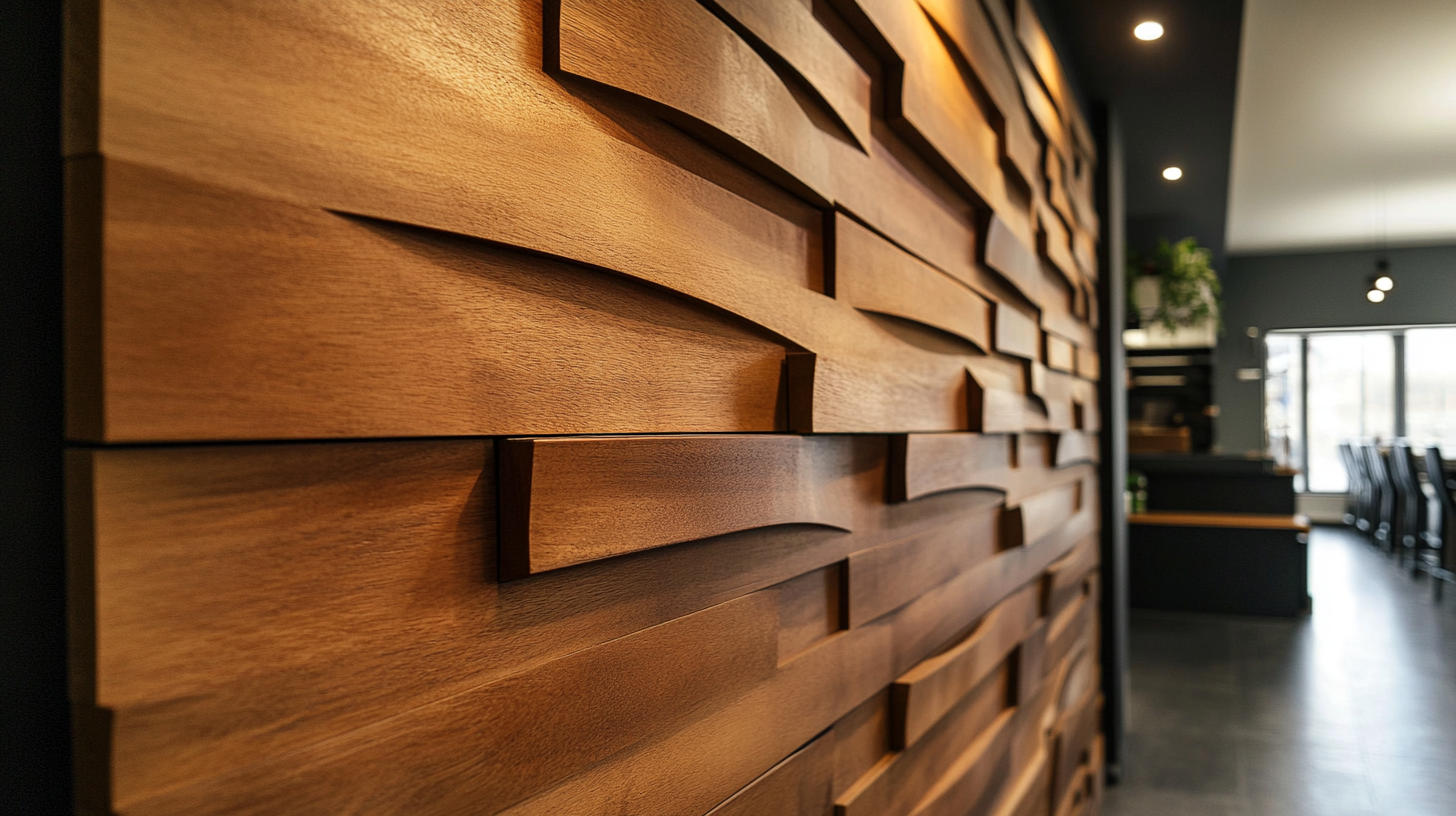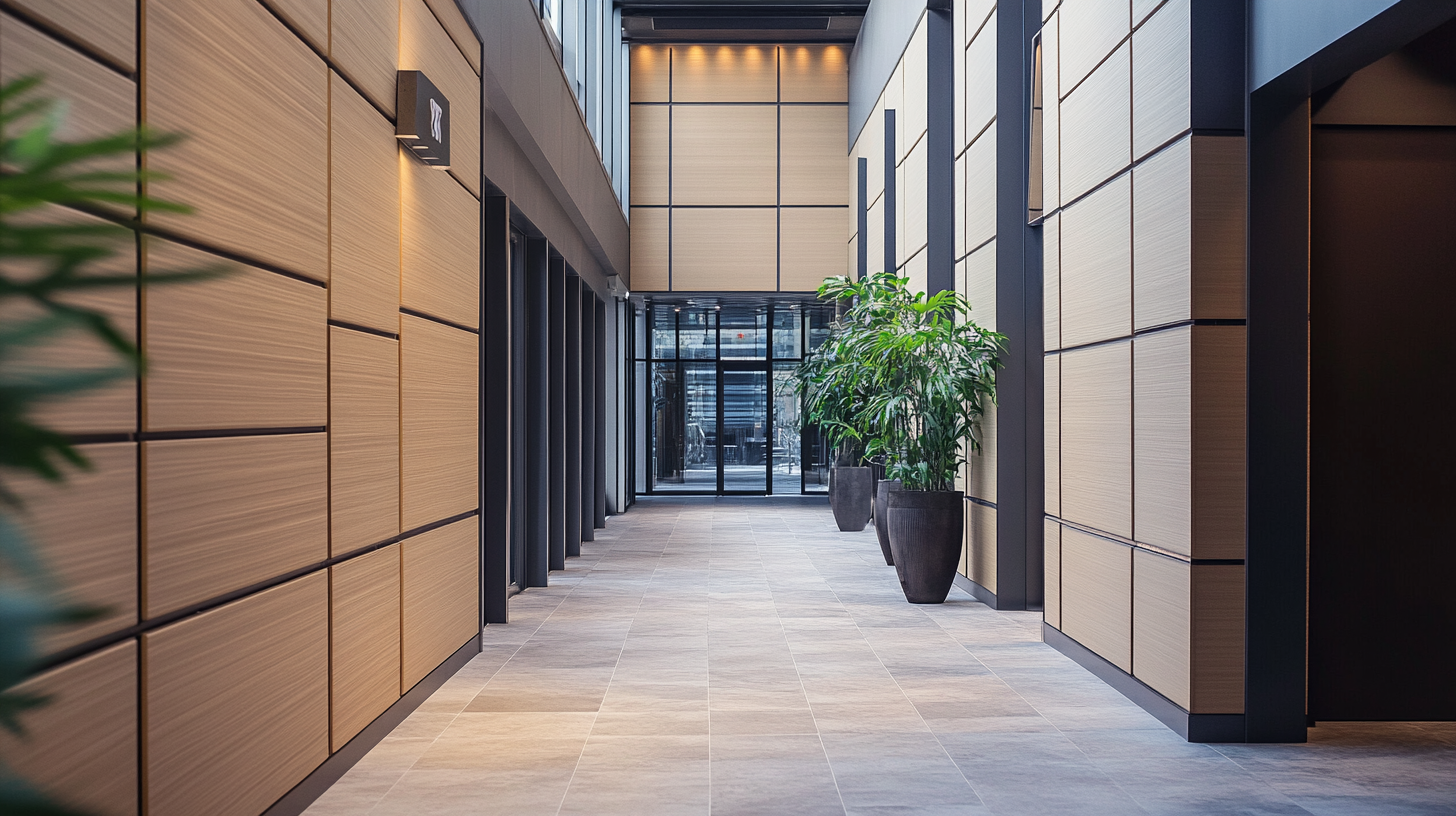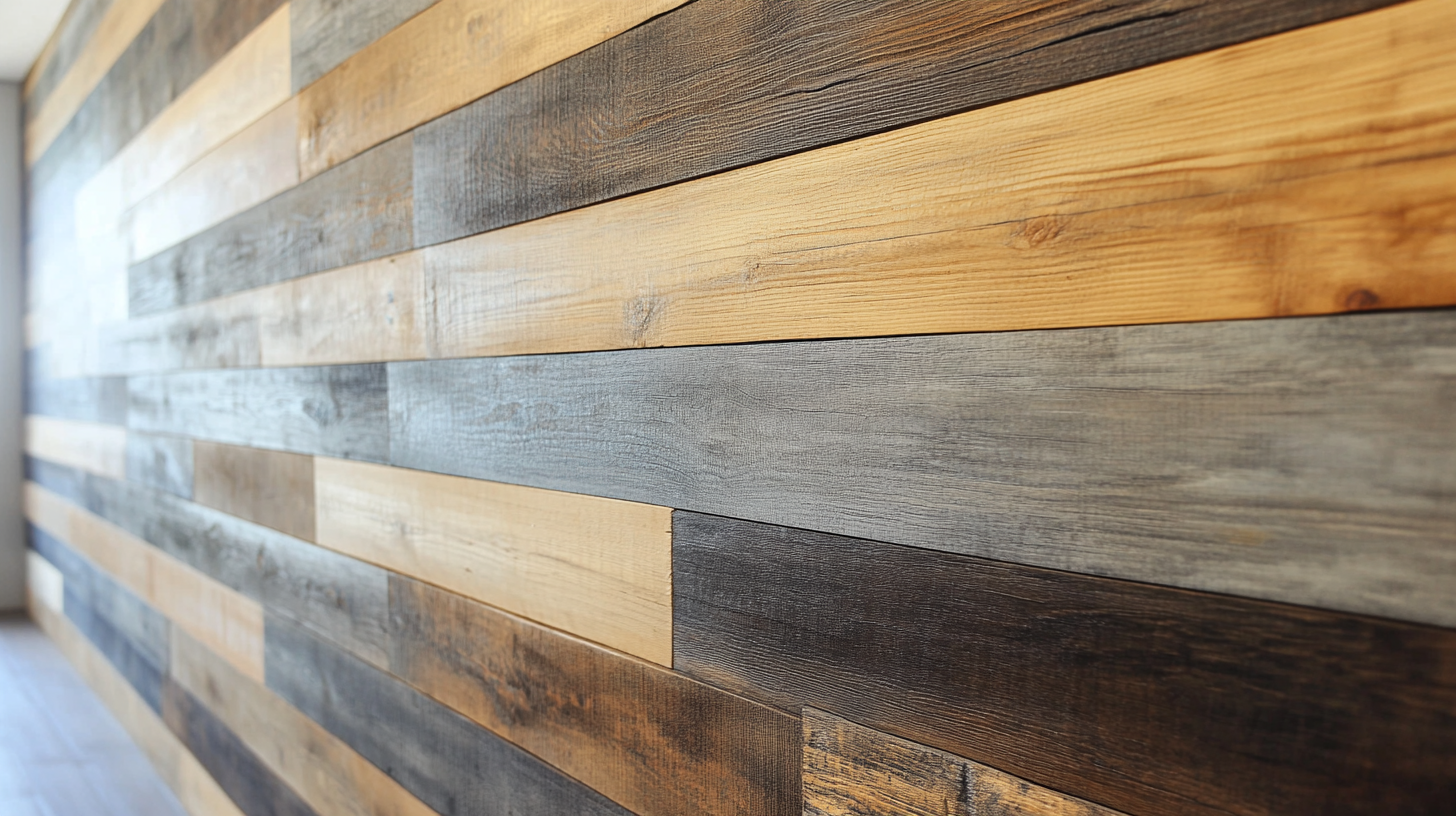Shandong Xiangying New Materials Technology Co., Ltd.
Shandong Xiangying New Materials Technology Co., Ltd.
The demand for innovative interior design solutions has surged in recent years, with the global interior wall panel market set to reach an estimated value of USD 12 billion by 2027, reflecting a compound annual growth rate (CAGR) of 5.8%. Among various materials, WPC (Wood-Plastic Composite) wall panels are gaining prominence due to their unique combination of aesthetic appeal and functional benefits. These panels not only enhance the visual dynamics of interiors but also offer durability, moisture resistance, and ease of installation, making them an ideal choice for both residential and commercial spaces.
As designers and homeowners increasingly seek sustainable and adaptable options, WPC wall panel interiors emerge as a frontrunner. A recent industry report highlights that 60% of consumers prioritize eco-friendly materials in their home improvement projects, aligning perfectly with the environmentally friendly nature of WPC panels. By integrating WPC wall panels into interior spaces, individuals can achieve a contemporary look while also contributing to sustainability efforts. This blog will explore the multifaceted benefits of WPC wall panels, illustrating how they can transform any interior environment into a stunning and functional space.

Wood Plastic Composite (WPC) wall panels have emerged as a revolutionary construction and design material, blending the durability of plastic with the aesthetics of wood. These panels are manufactured using a combination of recycled wood fibers and thermoplastics, creating a sustainable option for interior décor. One of the most significant advantages of WPC wall panels is their resistance to moisture, making them ideal for use in high-humidity areas like bathrooms and kitchens. Unlike traditional wood, they do not warp, crack, or rot, offering longevity and peace of mind for homeowners and designers alike. The installation process of WPC wall panels is straightforward and user-friendly, setting them apart from more conventional materials. They can be easily cut and shaped, allowing for custom designs that align with various aesthetic preferences. Additionally, many WPC wall panels come with a tongue-and-groove design, enabling a seamless and efficient installation. This convenience reduces labor costs and time, making WPC an attractive choice for both DIY enthusiasts and professional contractors. Furthermore, WPC wall panels are available in a wide range of colors, textures, and finishes, mimicking the look of real wood while requiring minimal maintenance. Customers can enjoy the warmth and beauty of wood with the added benefits of easy cleaning and UV resistance. As interior design trends move towards sustainable and practical solutions, WPC wall panels present a compelling option for transforming living spaces into stylish and functional environments.

When it comes to transforming interior spaces, WPC (Wood Plastic Composite) wall panels are rapidly gaining attention, particularly for their environmental benefits. As the construction industry shifts toward sustainable practices, WPC wall panels offer an eco-friendly alternative to traditional materials. Not only do they incorporate recycled content—thus reducing waste—but they also contribute to the zero-waste movement, which aims for sustainable building envelopes devoid of excess material disposal.
According to various industry reports, WPC wall panels are manufactured through a process that allows for a significant reduction in energy consumption. Studies indicate that the use of recycled wood fibers and plastics can lower the energy required for production by up to 30% compared to conventional materials. Additionally, WPC panels provide excellent thermal insulation, contributing to lower heating and cooling costs, which is increasingly vital as energy efficiency becomes a top priority in modern building design.
Moreover, the low maintenance requirements of these panels contribute to their sustainability. With a lifespan exceeding 25 years, WPC wall panels minimize the need for frequent replacements. Their durability also means less resource consumption over time, aligning with the industry's growing commitment to sustainable development. Adopting WPC technology is not just a choice for aesthetic enhancement; it's a step towards responsible resource management and environmental stewardship in interior design.

WPC (Wood-Plastic Composite) wall panels are revolutionizing interior design by offering an array of stylish options that significantly enhance aesthetics. According to a report by the Freedonia Group, the demand for WPC materials in construction is projected to grow at an annual rate of 5.3% through 2025, highlighting their increasing popularity among homeowners and designers alike. With their blend of wood and plastic, WPC panels provide a visually appealing alternative to traditional materials while maintaining durability and functionality.
The versatility of WPC wall panels allows for creative expression in various design contexts. Available in a range of finishes, colors, and textures, these panels can mimic natural wood grains or present a modern, sleek appearance, catering to diverse tastes and themes. A survey by the American Institute of Architects noted that 71% of architects find utilizing sustainable materials, like WPC, contributes positively to project aesthetics, making them a preferred choice for environmentally conscious designs.
Furthermore, WPC wall panels are engineered for ease of installation and maintenance, making them an attractive option for both residential and commercial spaces. The growing trend towards biophilic design emphasizes the use of materials that create a connection with nature while being practical. WPC panels not only align with this aesthetic but also deliver excellent resistance to moisture and pests, extending their lifespan and ensuring ongoing visual appeal. This combination of durability, style, and sustainability positions WPC wall panels as a standout option in modern interior design.

When it comes to transforming your interiors, WPC (Wood Plastic Composite) wall panels are an increasingly popular choice among homeowners. One of the standout features of WPC panels is their easy installation. Unlike traditional wall materials that can require extensive preparation and specialized tools, WPC panels are designed for quick and straightforward setup. This means less time spent on renovations and more time enjoying your beautifully transformed spaces. The lightweight nature of WPC panels also means that many homeowners can manage the installation on their own, making it a cost-effective solution for those looking to upgrade their interiors without hiring outside help.
In addition to ease of installation, WPC wall panels are low maintenance, which further enhances their appeal. These panels are resistant to moisture, mold, and fading, making them suitable for various environments, including kitchens and bathrooms. Regular upkeep is minimal, usually involving just a simple wipe down to keep them looking fresh and new. This quality makes WPC an ideal choice for busy families or individuals who want beautiful, functional spaces without the hassle of constant maintenance. As homeowners increasingly seek practical and sustainable options, WPC wall panels emerge as a smart investment that combines aesthetics with functionality.
WPC (Wood Plastic Composite) wall panels are becoming an increasingly popular choice for interior design, combining aesthetic appeal with practicality. One of the most compelling reasons to consider these panels is their cost-effectiveness, which translates into long-term savings for homeowners and businesses alike. According to a recent analysis, buildings equipped with improved insulation and renewable energy sources can reduce energy consumption significantly. By incorporating WPC wall panels, property owners can achieve enhanced thermal insulation, ultimately leading to lower heating and cooling costs.
Moreover, the shift towards greener building materials is evident in industry conferences that highlight innovative solutions for sustainable construction. The use of WPC panels not only supports energy efficiency but also requires less maintenance compared to traditional materials, which can incur additional costs over time. Studies have shown that materials like WPC can contribute to up to a 30% reduction in overall maintenance expenses, making them a smart investment for the future.
Incorporating WPC wall panels can positively impact the environmental footprint of a building. With growing concerns about sustainability, selecting materials that minimize resource use and promote longevity is essential. By opting for WPC panels, homeowners can partake in this green movement while enjoying stylish and durable interior spaces. The emphasis on cost-effectiveness and sustainability makes WPC wall panels an attractive choice for those looking to enhance their environments economically and responsibly.
